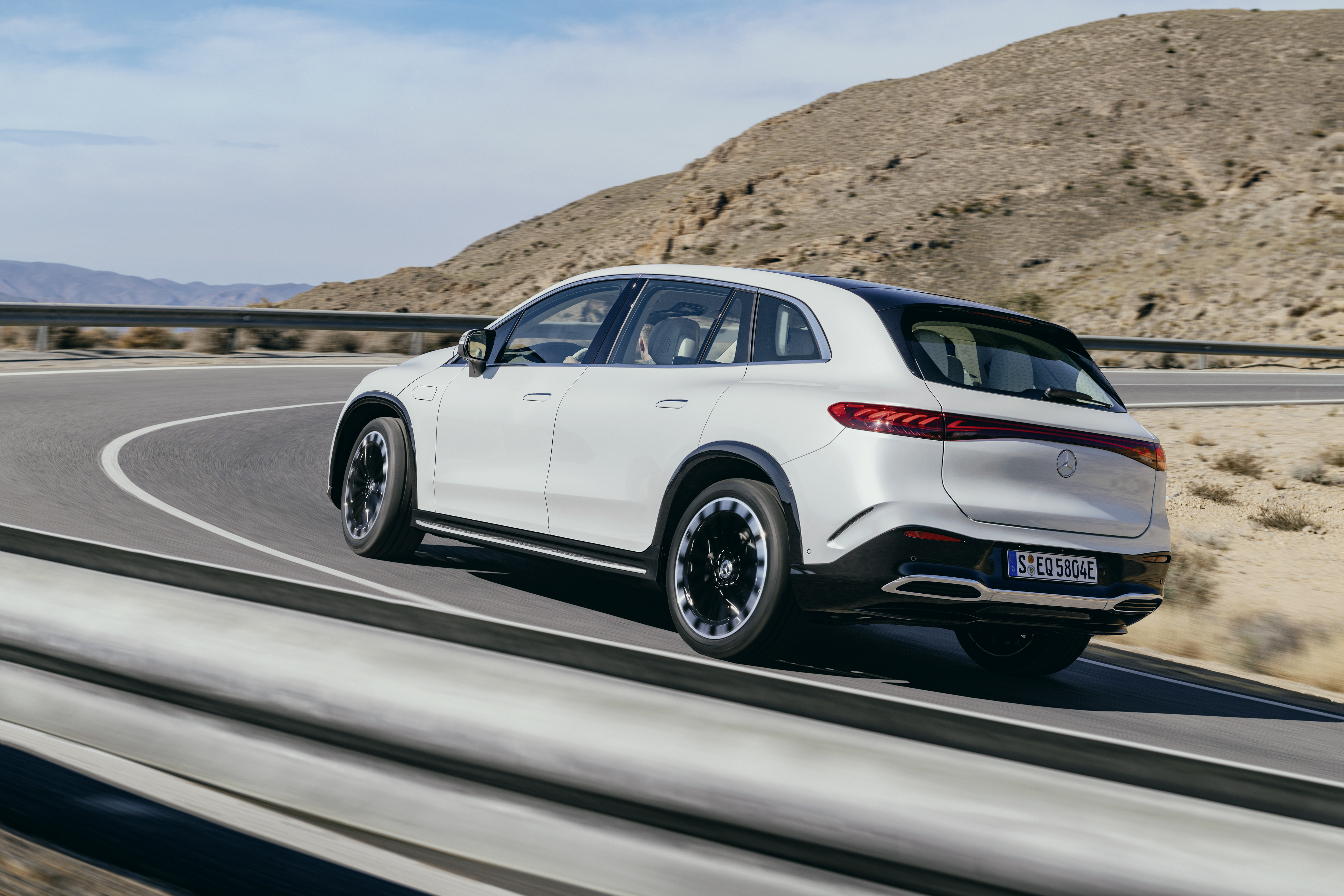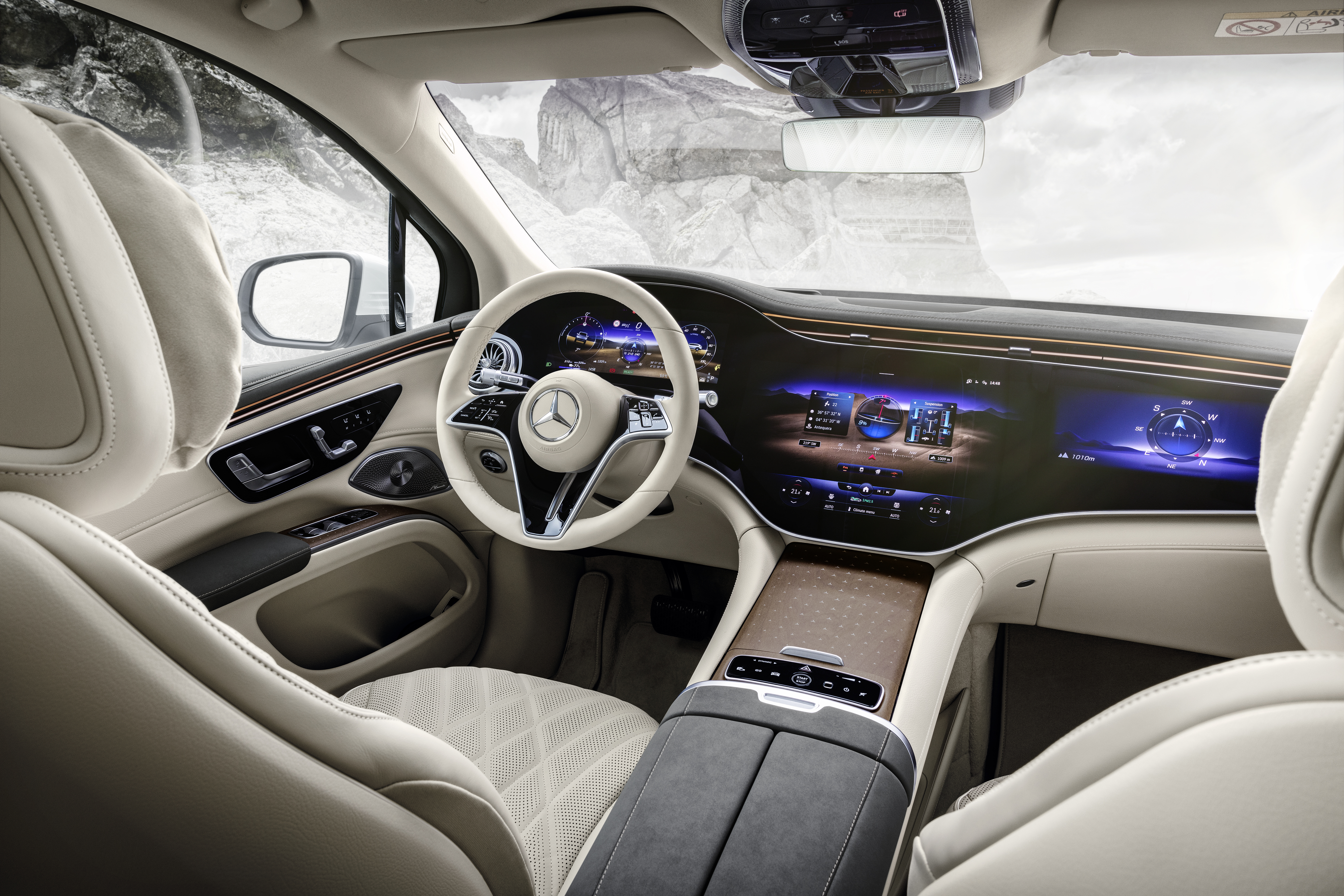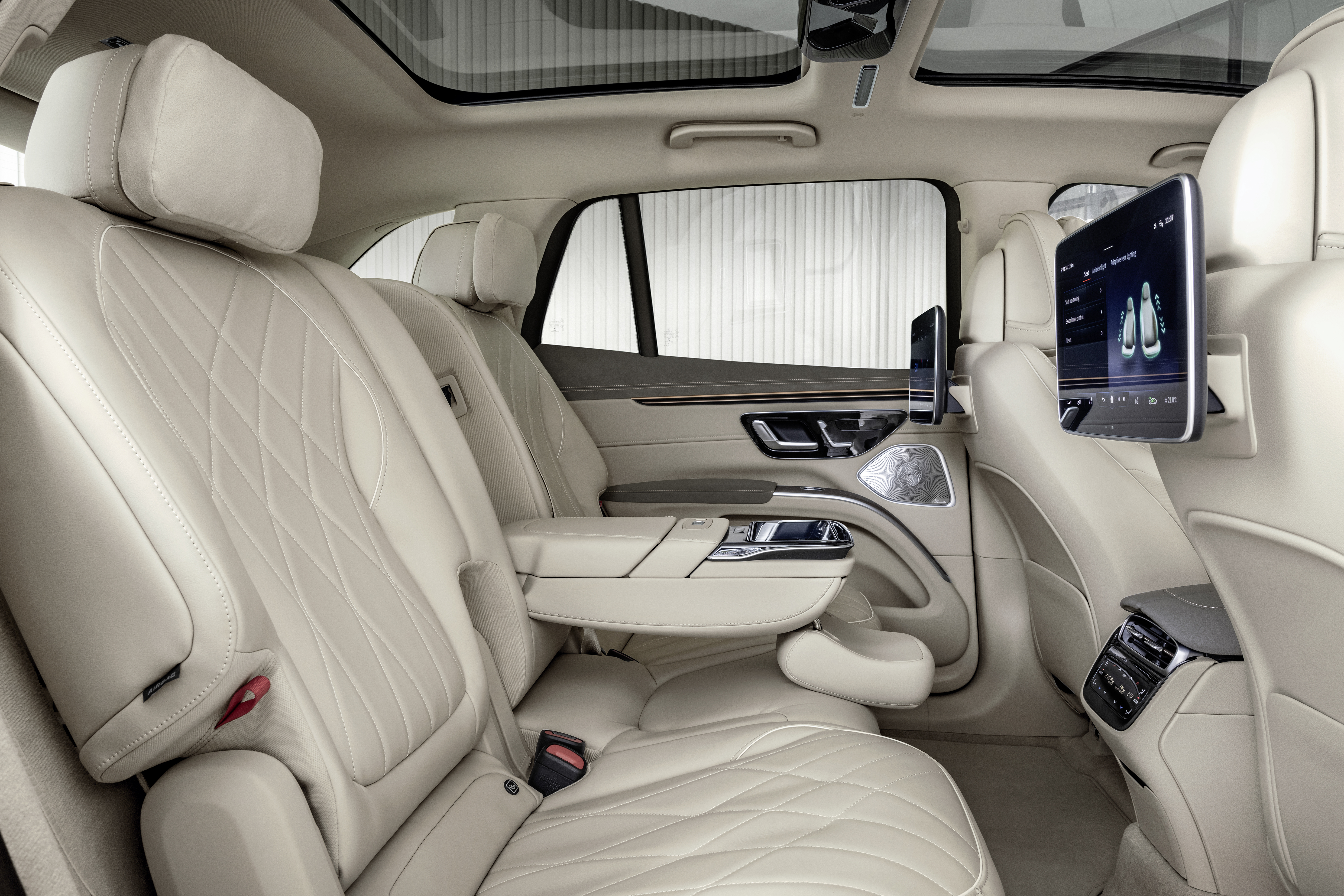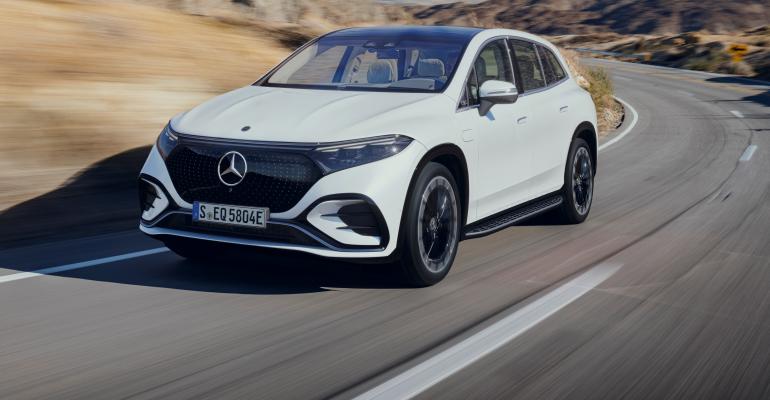Mercedes-Benz introduces the new EQS ahead of a planned August launch of North American sales for the battery-electric SUV produced at the company’s plant in Tuscaloosa, AL.
With a range of up to 410 miles (660 km) on the European WLTP test cycle, the seventh model to be sold under Mercedes-Benz’s EQ sub-brand will compete against the likes of the BMW iX and Tesla Model X with an initial choice of three drivetrains and either a standard 5- or optional 7-seat interior layout.
As with the EQS and EQE sedans, the EQS SUV is based on the dedicated Electric Vehicle Architecture (EVA) platform developed by Mercedes-Benz for its more upmarket BEVs. It supports both single-motor rear-wheel drive and dual-motor all-wheel drive.
All launch models are equipped with a 400V battery with an energy content of 107.8 kWh. Consisting of 12 modules, it is fitted within the floor of the EVA platform, providing the EQS with a largely flat floor.
Key exterior elements include a blanked-off black panel grille (optional with a star-pattern treatment), angular LED headlamps (optional with Mercedes-Benz’s Digital Light functionality) and a horizontal LED light bar across the leading edge.
As on the EQS and EQE sedans, the EQS SUV’s large clamshell-style hood is designed to be opened only during servicing.
Departing from the EQS and EQE sedans, the doors are framed. Their flush handles are standard across the range. Narrow running boards contribute to aerodynamic efficiency by smoothing the airflow along the sides.
At the rear, the full-width taillamp (pictured, below) mimics the look first seen on the 3-year-old EQC SUV, while the angled liftgate opens to reveal a rather high liftover and flat trunk floor.

Mercedes-Benz has yet to reveal a drag coefficient, though the company suggests it is the German automaker’s most aerodynamically efficient SUV production model, thanks in part to a completely flat undertray.
At 201.8 ins. (5,126 mm) long, 77.1 ins. (1,958 mm) wide and 67.6 ins. (1,717 mm) tall, the EQS SUV is 3.2 ins. (81 mm) shorter, just 0.1 in. (2.5 mm) wider and 4.1 ins. (104 mm) taller than the GLS SUV. It also rides on a wheelbase that is 2.9 ins. (74 mm) longer than its combustion-engine sibling at 126.4 ins. (3,211 mm).
Two EQS SUV models with three electric drivelines will be available when U.S. sales begin.
Kicking off the lineup is the EQS450. It comes in single-motor, RWD EQS450+ and dual-motor, AWD EQS450 4Matic guises, both with 355 hp and a respective 490 lb.-ft. (664 Nm) and 590 lb.-ft. (800 Nm) of torque.
Mercedes-Benz says the EQS450+ has overall consumption of between 2.7 and 3.3 miles (4.3 and 5.3 km) per kWh on the WLTP test cycle, giving it a corresponding range of between 333 and 410 miles (536 and 660 km). The EQS450 4Matic’s additional electric motor raises consumption by 2.7 to 3.1 miles (5.0 km) per kWh, giving it an official WLTP range of between 315 and 381 miles (507 and 613 km).
Heading the lineup is the dual-motor AWD EQS580 4Matic with 536 hp and 632 lb.-ft. (857 Nm) of torque. This is 20 hp and 2 lb.-ft. (2.7 Nm) more than the same driveline in the similarly configured EQS580 4Matic sedan.
Despite offering 181 hp and 42 lb.-ft. (57 Nm) more than the EQS450 4Matic, the range-topping EQS580 4Matic is claimed to boast exactly the same consumption and range as the lesser model.
There are three different levels of energy recuperation: D+ (coasting), D (standard regeneration) and D- (enhanced regeneration). The driver also can choose an adaptive setting called D-Auto. It constantly alters the energy regeneration depending on the driving conditions.
The EQS SUV is underpinned by a four-link front and multilink rear suspension featuring Mercedes-Benz’s AirMatic air springs and variable damping control as standard.
The ride height can be raised by up to 1.0 in. (25 mm) from its default setting to improve ground clearance at speeds up to 50 mph (81 km/h). Above 68 mph (109 km/h) it automatically lowers by 0.4 in. (10 mm) in Comfort mode and by 0.6 in. (15 mm) in Sport mode to reduce aerodynamic drag.
There are four primary driving modes: Eco, Comfort, Sport and Off-Road, the latter of which can be operated with or without the electronic stability program engaged.
The battery can be charged at up to 22kW on an AC charger and up to 200kW on a DC system.

Inside (pictured, above), the Mercedes-Benz SUV draws heavily on the design established on the EQS and EQE sedans.
A 12.3-in. (31-cm) digital instrument display and 12.8 in. (33-cm) portrait-style infotainment displays are standard on the EQS450 models. The plusher EQS580 receives Mercedes-Benz’s new Hyperscreen, which includes 12.3-in. instrument, 17.7-in. (45-cm) infotainment and 12.3-in. front passenger displays.
An MBUX operating system supports conversational speech commands. The EQS SUV also receives over-the-air software update functionality and an optional head-up display with augmented-reality navigation.
The second-row rear seat (pictured, below) offers 5.1 ins. (130 cm) of longitudinal adjustment as well as electric adjustment of the backrest. When it is pushed all the way forward, trunk capacity in the 5-seat EQS SUV is 22.8 cu.-ft. (646 L).
With the second-row seat pushed forward and folded down, overall cargo capacity extends to 74.2 cu.-ft. (2,101 L), though there remains a raised section within the floor because the seatback doesn’t fold completely flat.
An optional third row of seats extends accommodation to seven. So configured, the new Mercedes-Benz SUV offers 6.9 cu.-ft. (195 L) of luggage space.






